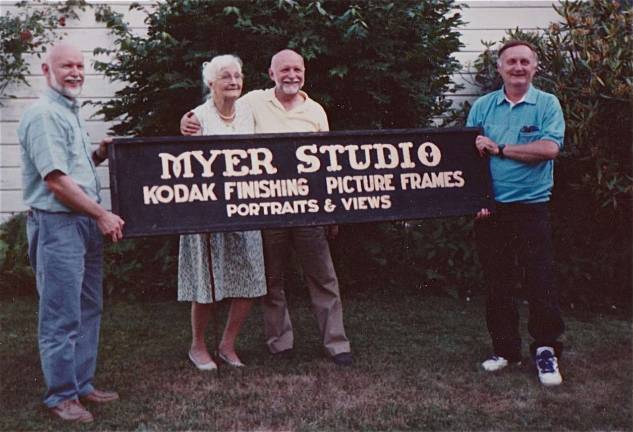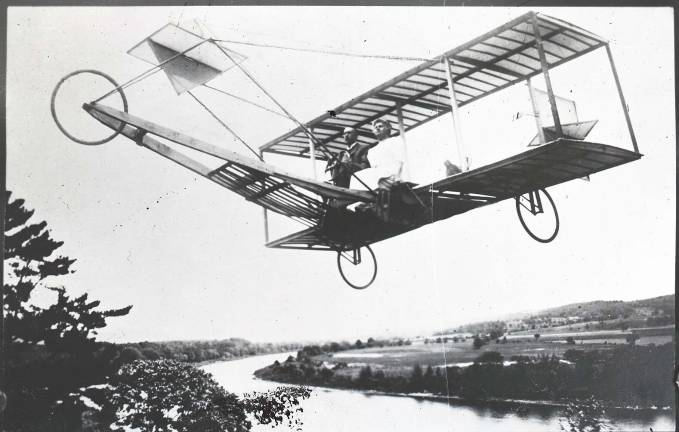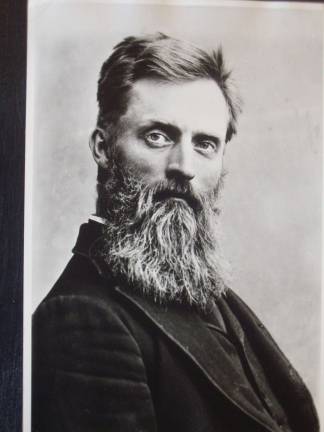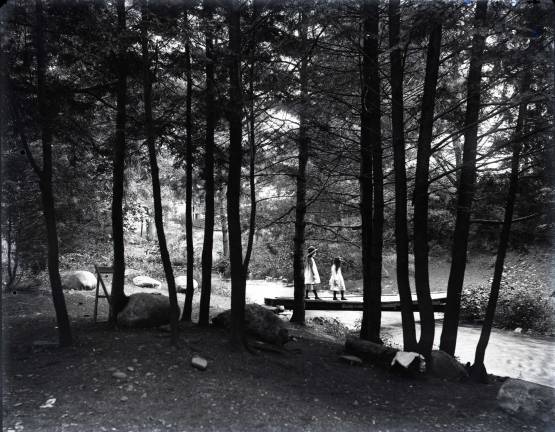Peter Myer’s quest to preserve his grandfather’s legacy




MILFORD — While Peter Myer was a young boy visiting his grandmother, he and his brother stumbled upon a treasure trove in her shed. Exploring as children do, they found glass plates with images of women in funny hats and old cars. As the boy grew, he came to know that these were images his grandfather had preserved of a time that had long since passed.
His grandfather had died five years before he was born, but Myer would spend his life getting to know the man through the images that he created and preserved and later work diligently and painstakingly to share what he found with the community he grew up in.
His limited edition book, 20 years in the making, literally came off the presses weeks ago. In it, Myers presents 400 coffee table sized pages of local history, biographical material and more than 260 photos created from more than 5,000 glass plates that his grandfather created in the late 1800’s and early 1900’s in Milford
In the book, Myer shows the artistry of his grandfather, James Alfred Myer, who had learned the technical side of being a photographer from a man passing through town on his way to open a photography studio in Hawley. Throughout the years, he painted his own backdrops, created his own props and even created his own emulsion for developing the photos from the whites of the eggs his wife’s chickens laid.
Some of his photos document famous filmmakers such as D.W. Griffith shooting movies in Milford in 1912 and others show his genius in compiling images of vacationers sitting in a replica of a Wright Brother’s plane flying over the Delaware to send home to their friends. His son’s built the fake plane, the family would climb steps into the plane and Myer would eliminate the steps from the plate and drop in an image of the Delaware River.
According to Peter, his grandfather grew up in Cuddebackville and though he initially worked in a bluestone quarry, set up his photography business in 1885 at the age of 30.
“I feel like I know my grandfather better than someone whose grandfather was alive," said Myer. "I learned about his sensitivity.”
Myer tells how his grandfather only used natural light and that he always listed his occupation as artist.
The book came about when Peter suggested to his grandfather’s only sister Vera — as she was about to enter a nursing home after a fall — that she write down some of her memories of her brother’s life. He had approached her about having the glass plates transported to Brigham Young University where he taught art and was an artist in his own right. They had just added a room in the basement of the new library that was to be specifically used to store glass plates and to be used for printing from them and to develop photography. She had been reluctant to part with them but later approached the Pike County Historical Society to see if they wanted some of them. They did but wanted her to donate money to create a proper storage area for them.
She ended up donating at least 300 of the plates to the historical society and the rest including the plates Peter’s brother had and others found in Vera’s house after she died are all being preserved and stored at Brigham Young University. Before her death, when Peter visited her, he found 30 handwritten accounts of her memories and included them in the book.
The book took 20 years because of his work schedule, family life and later on his wife’s illness and eventual passing. After he retired from teaching, he was able to devote more time to the project.
There was little documentation that accompanied each photo that his grandfather took, causing him to research through local people’s accounts of where photos might have been taken or who was in them. Some of the photos had hand writing in the margins, but mostly it was like trying to put together a puzzle. Many of the photos were portraits, local scenes for post cards, photos taken of school groups or business groups.
Peter describes the difference between the glass plate images that his grandfather created up to the end of his life as being different from “tintypes” which could only be used once. The glass plates could create print after print and still be printed from today. He maintained his method of creating photography even after the introduction of the modern camera and film and the start of Kodak.
James Alfred Myer had not only created his own backdrops and props, he often created the parts of his own camera. It was a very big investment for him when he purchased his first lense, a Dallmeyer, considered to be one of the best for $80 to $90 at the time — which was considered a lot of money back then.
He purchased property in Milford and started his photo business in a tent on the property. He later constructed a building there and added on to the back so that his growing family could be near him. He had a total of six children.
Peter Myer purchased a scanner that was able to scan the glass plates for the purpose of printing positive images from the plates and had fun selecting the photos that would become part of the book.
“It was so rewarding to get the book done,” Myer said.
He will be giving a presentation at the Pike County Historical Society in Milford at 7 p.m. on Saturday, Aug. 31 where 500 signed copies will be available for purchase. On display will be 20 to 30 of his grandfather’s photos which depict Milford in the late 1800’s and early 1900’s.